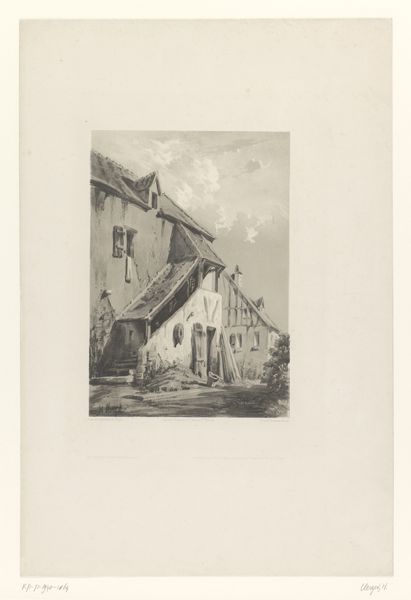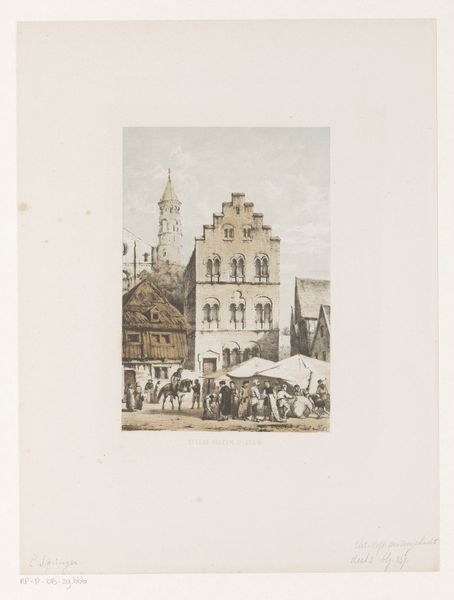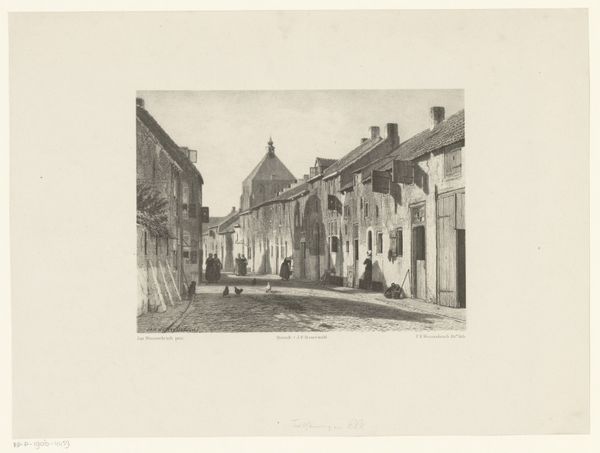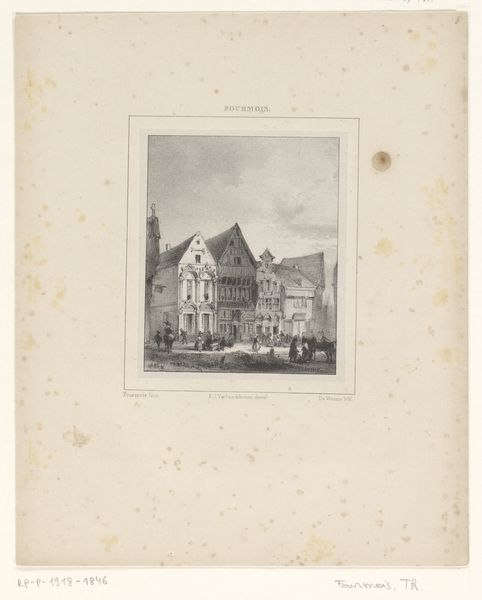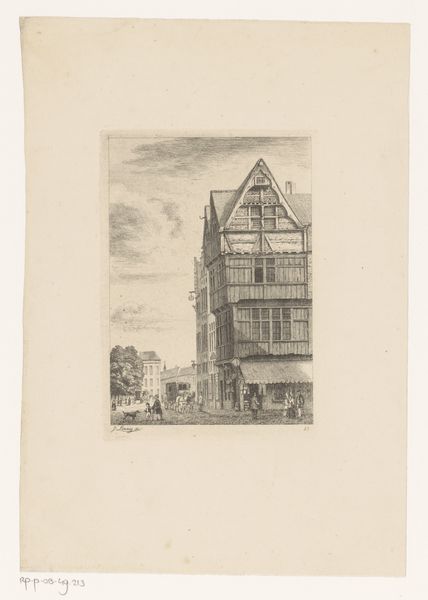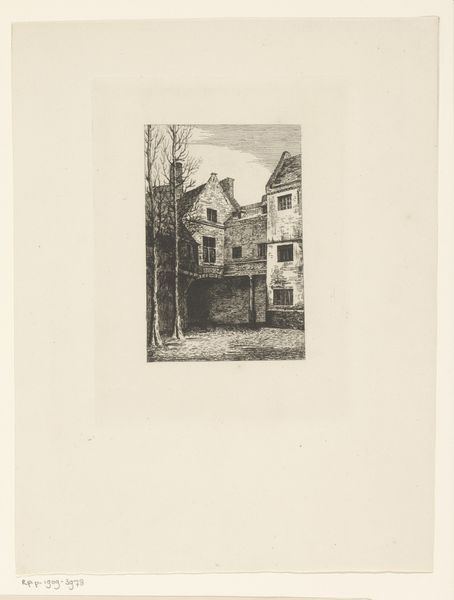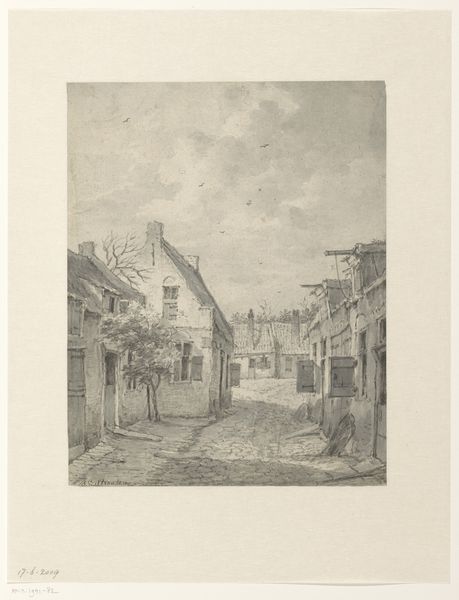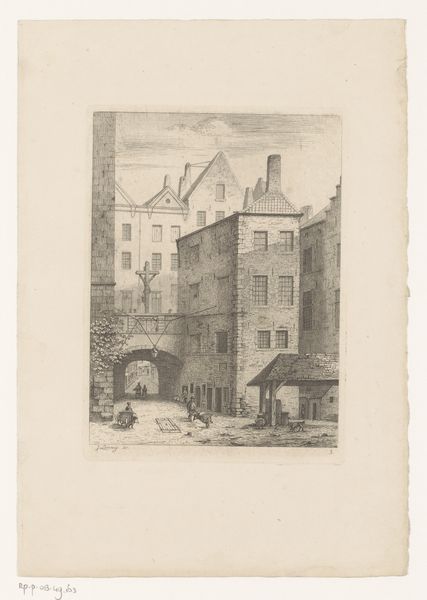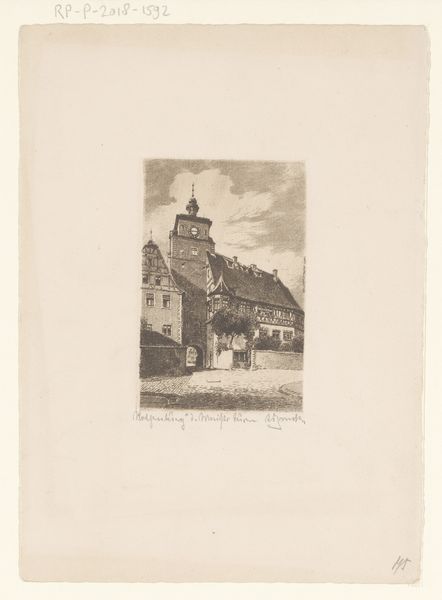
Dimensions: height 198 mm, width 150 mm
Copyright: Rijks Museum: Open Domain
Editor: This etching, "Oude huizen op de Place Verte, te Verviers," by Philip Zilcken, created in 1894, depicts old houses. It's striking how the architectural decay conveys a sense of social neglect. What do you see in this piece that I might be missing? Curator: This seemingly simple cityscape resonates with complex societal dynamics. Consider Verviers in the late 19th century: an industrial town grappling with rapid growth and the stark realities of class division. The artist, from an upper class background, captures a grittiness that exposes these tensions, doesn't he? What does the dilapidation signify within the larger context of urbanization and industrial exploitation? Editor: So, the decay isn’t just aesthetic; it's a commentary on the lived experiences of people in a specific socio-economic bracket during that time. Are you saying it's almost a political statement? Curator: Precisely. Zilcken wasn't just documenting buildings; he was showing the consequence of unchecked industrial expansion and social inequity. The lives affected are etched into every crack and broken window. Can we look at this work and, rather than only admiring it's aesthetic qualities, consider whose voices have been left out of its story? Editor: I never would have considered it from that angle. Now I see so much more than just an old building; I see the underbelly of progress. Curator: And that's the point, isn't it? Art can reveal uncomfortable truths if we engage with its social and historical framework. Considering art within historical contexts offers a better, more complex appreciation.
Comments
No comments
Be the first to comment and join the conversation on the ultimate creative platform.

